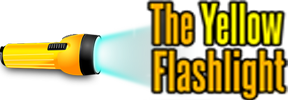Component driven design breaks interfaces into reusable parts and ships them as living code. This guide shows how to tokenize UI with design tokens, map them to CSS variables, and document components with Storybook. You will learn practical patterns to build component libraries that remain consistent, themeable, and easy to maintain across teams and products.
Why component driven design matters — component libraries

Component-driven design treats each piece as its own ship-able unit. It makes interfaces predictable and testable. Teams can work in parallel without stepping on toes. Reuse cuts duplication and speeds deliveries. Quality becomes easier to verify through isolated examples.
Tokenizing style with design tokens
Start by naming colors, espaciado, and type as reusable tokens. A recent report found design tokens adoption jumped from 56% en 2024 to 84% en 2025. That shows teams value a single source of truth. Map those tokens to runtime CSS variables so components theme easily in the browser. This ties design decisions directly to shipped code.
Build a living component library that documents each component and its token usage. Components become the primary unit you ship, not whole pages. This approach aligns designers and engineers. It also makes on-the-fly theming simple with CSS variables. Use story-driven tools to render components in isolation. Storybook is a natural place to test and publish examples for teams.
At The Yellow Flashlight we pair modern diseño gráfico thinking with automation. Teams using Agentes de IA speed repetitive tasks. Try integrating your tokens with herramientas de diseño and see consistent results. For deeper Figma integration, check our guide on Figma variables and design tokens.
Design tokens and CSS variables in practice
A 2024 survey found that design tokens reached 84% adoption in modern design systems.
Turn decisions into code
Design tokens become the single source for color, espaciado, tipo, and motion. Export tokens into CSS variables so runtime theming is trivial. Tokens sit between design tools and code, enabling consistent scale across platforms.
- Define tokens in a JSON or YAML file
- Compile tokens into –variable names for CSS
- Wire variables into components for theming and runtime switches
This pattern decouples visual intent from component implementation and allows rapid theme experiments.
Ship with Storybook and runtime switches
Use Storybook panels to toggle themes built from CSS variables. Storybook makes previewing changes fast for teams working on component libraries. When you export tokens as variables, theming becomes a style switch at runtime.
Ship a small theme first. Let teams swap values without a rebuild. Component libraries profit from this separation of concerns.
If you want to map design files to code, see how Figma variables relate to tokens in our Figma variables and token mapping guide.
Shipping Tokenized UI with design tokens

Storybook becomes the living catalog where components show states and usage. A common addon can switch themes by toggling CSS variables live. You saw design tokens in the previous chapter and now map them to code.
Make components discoverable inside component libraries
Integrate a token panel so teams preview CSS variables and flip themes. Documentation in Storybook doubles as a reference and a test bed. Addons surface how tokens connect to each component. If you manage tokens in Figma, ver how Figma variables connect to tokens for practical sync tips.
- Write stories that cover accessibility and edge states.
- Add a design tokens addon to map tokens to components.
- Automate visual tests to prevent regressions.
Ship component libraries with Storybook as the gatekeeper for quality. Use automated checks to catch token drift before release. Teams preview CSS variables, confirm themes, and keep tokens consistent. We also pair diseño gráfico con Agentes de IA workflows. Our work considers identidad visual, proceso creativo, logotipos, estrategia de marca, obra de arte digital, herramientas de diseño, y Plantillas de fotomatón.
Scale maintenance and distribution for component libraries
Keep the system healthy. En la linterna amarilla, we love diseño gráfico workflows that stay usable over time.
Start by naming your design tokens with intent and consistency.
Map those intents to concrete code so teams understand purpose.
Then expose them as CSS variables for runtime theming and safe overrides.
Version-control the source of truth and tag releases in Git.
Publish component libraries as small, focused packages with clear changelogs.
Automate builds and deploy Storybook previews for reviews. We build Agentes de IA to help with release checks.
Create migration guides before renaming or removing critical design tokens.
Use Style Dictionary or similar to generate the CSS variables artifacts. Also map design specs from Figma to code; see our Figma variables guide.
Governance and automation
- Create migration guides for token changes
- Publish component packages with clear changelogs
- Encourage cross functional ownership between design and engineering
CI checks, Storybook deploys, and package registries keep component libraries reliable and evolvable.
Palabras finales
A clear component driven workflow with design tokens, CSS variables and Storybook reduces friction between design and development. Tokenize decisions, surface them via CSS variables, and document components in Storybook to create reusable, themeable component libraries. Empezar pequeño, automate token pipelines, and iterate with real usage to scale a sustainable system that helps teams ship reliable UI faster.
